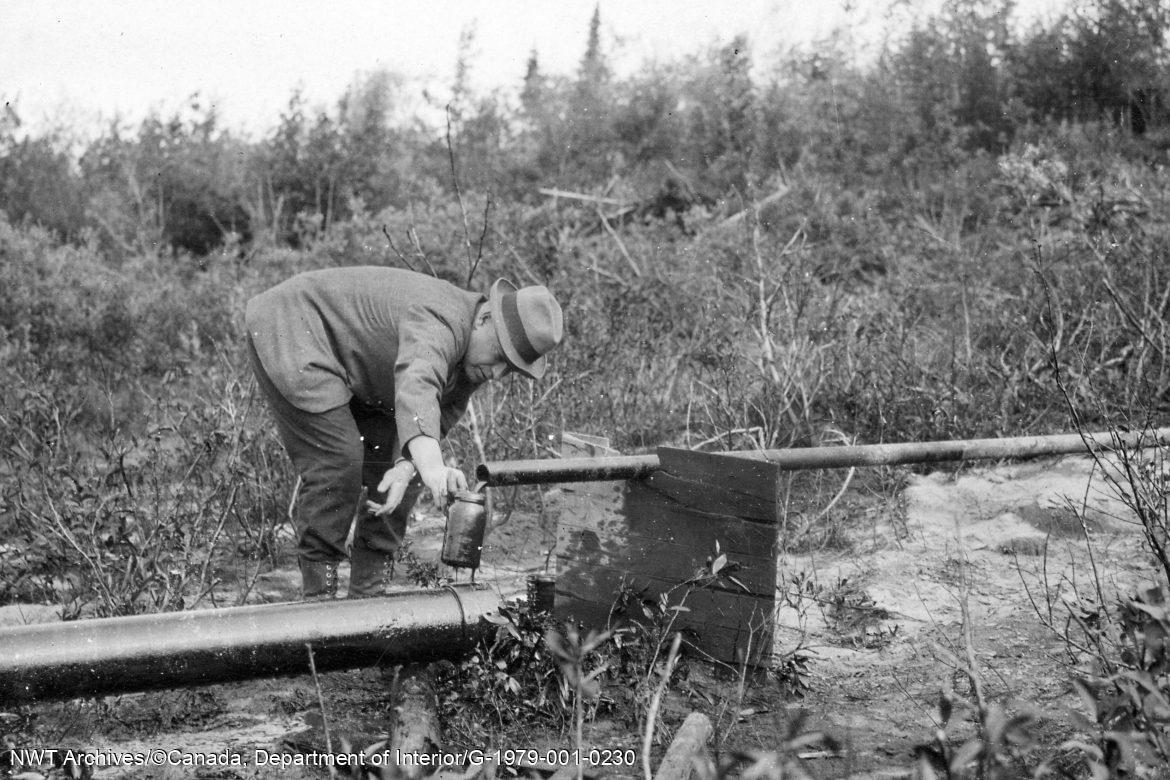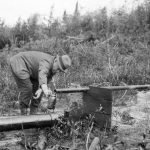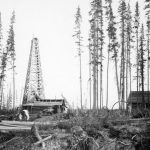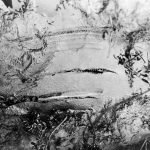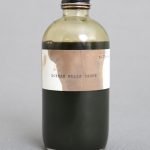1920
Northern Oil
The Sahtu Dene had been aware of oil along the banks of the Mackenzie River for many generations. The Dene traditionally used the oil to waterproof their canoes and baskets. Adventurer and trader Alexander Mackenzie, in 1789, also noted that “pieces of petroleum which bears a resemblance to yellow wax” could be seen at various locations along the Dehcho.
In 1911, J.K. Cornwall of the Northern Trading Company saw an oil slick on the surface of the Mackenzie River near Fort Norman (now Tulita). He hired a local Dene trapper, Karkassee, to locate and take samples from the source of this slick, a small pool of oil on the riverbank downstream from Fort Norman. A Pittsburgh, Pennsylvania, laboratory confirmed the high quality of the samples.
In 1919, Imperial Oil purchased J.K. Cornwall’s claim and sent their geologist, Ted Link, north to investigate. Leading a party of eight men, he transported a drilling rig and an ox from Edmonton to the area where these pools of oil had been seen. The men survived the extreme cold working through that first winter, but the ox became Christmas dinner!
The following summer, on August 27, 1920, the crew watched with delight as their drill struck oil, creating a 70-foot gusher when oil spewed out of the ground at high speeds. The location became known as Norman Wells because of its proximity to Fort Norman. The Norman Wells area became the site of an intense but short-lived oil staking rush during the summer of 1921, from which the Indigenous peoples hardly benefited.
Due to the difficulties transporting oil south, it was used primarily to supply the fuel for the developing mechanization of the North. It wasn’t until 1942, with the construction of the Canadian Oil-Canol pipeline, that some of this oil was pumped across the Mackenzie Mountains to the Yukon.
The discovery of oil brought the first significant rush of settlers to the NWT and the first land grab for resources. The government established district offices in Fort Smith in 1921, and the NWT Council managed it all from their offices in Ottawa.
A renewed interest in Treaty negotiations with the Dene people along the Mackenzie River, a rebuilding of transportation networks, including better portage systems around Fort Smith’s rapids, and the inaugural use of the airplane were unexpected consequences of Karkassee’s discovery.
